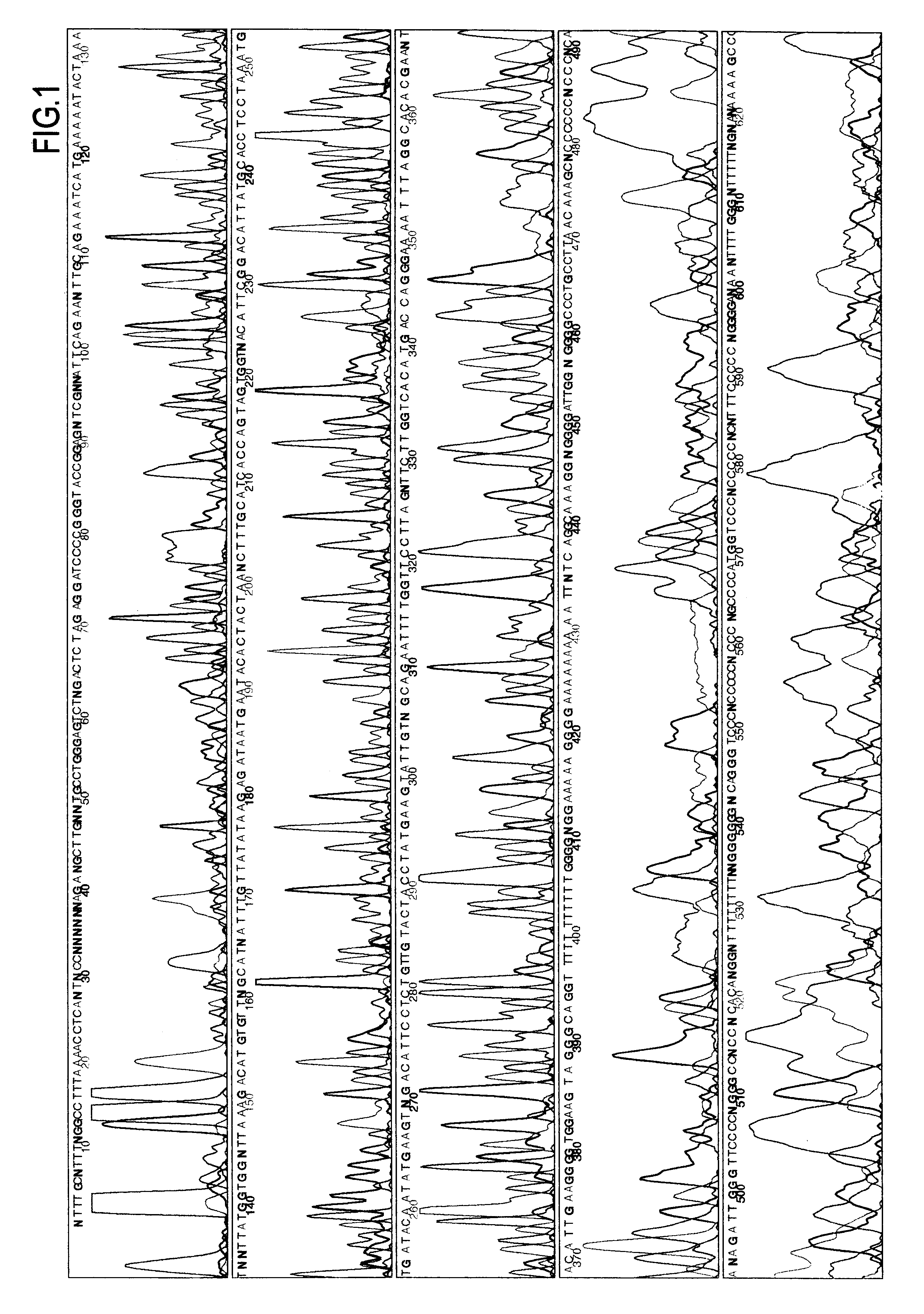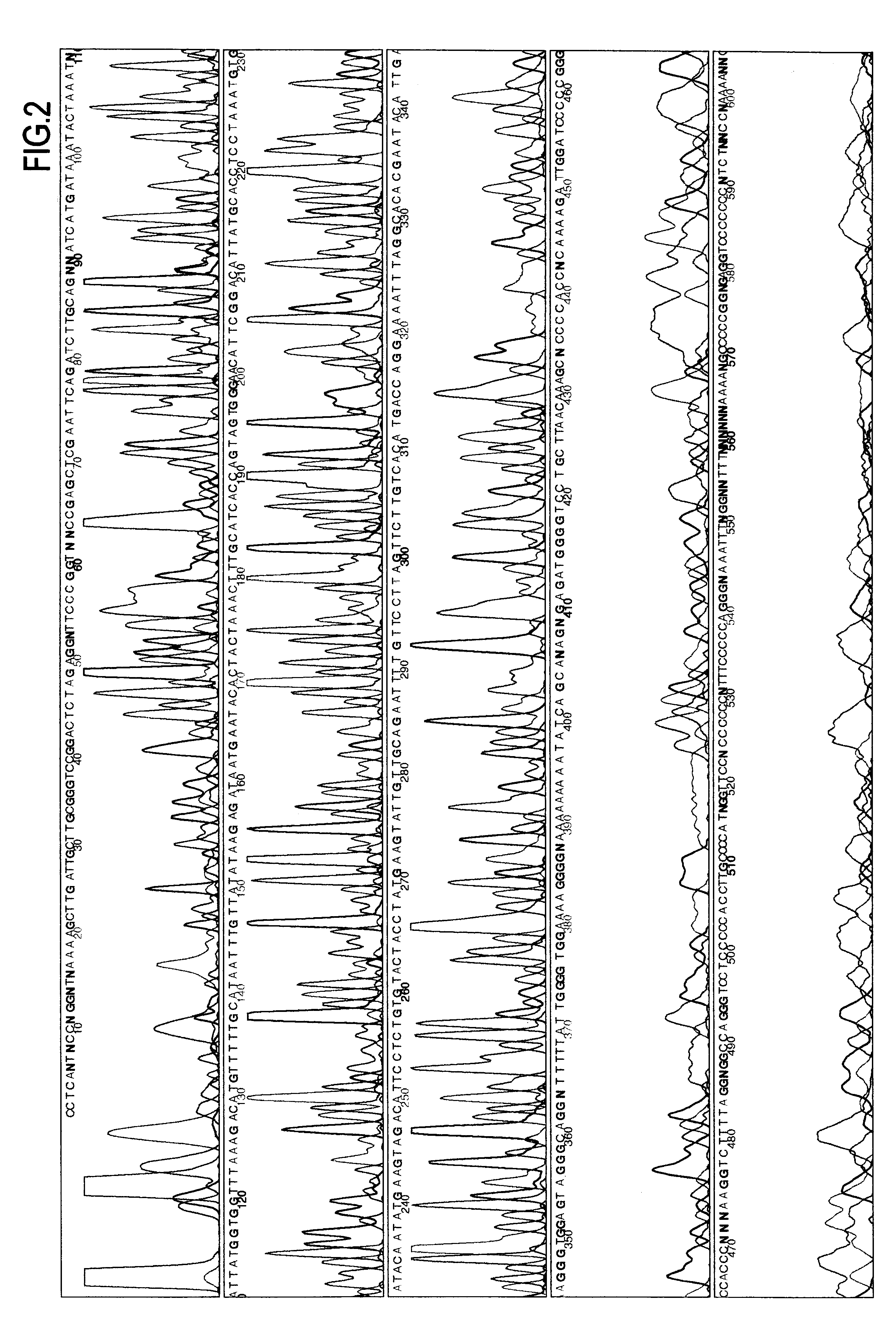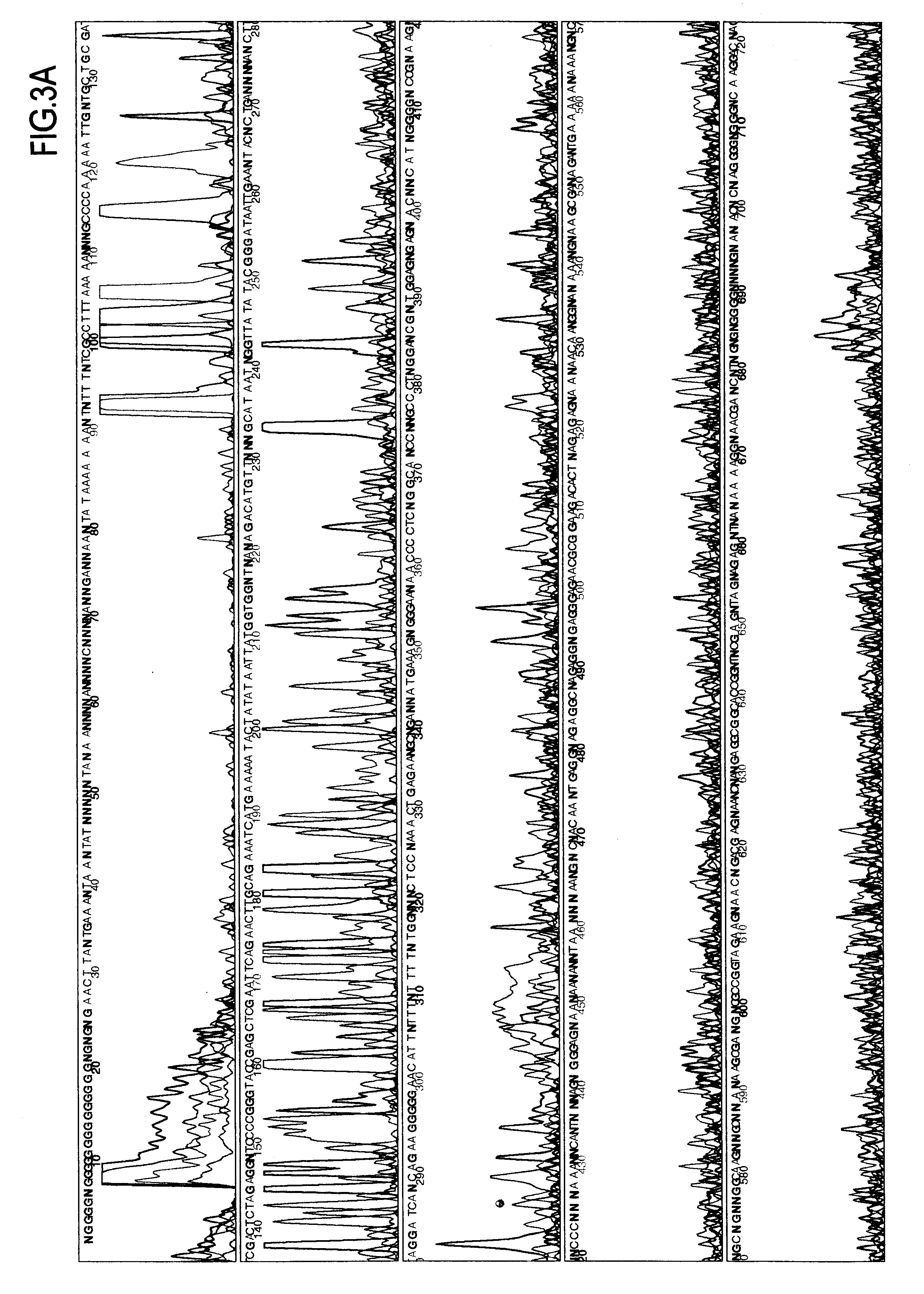Use of extremely thermophilic DNA-polymerases
a dna polymerase, extremely thermophilic technology, applied in the direction of biochemistry apparatus and processes, sugar derivatives, enzymes, etc., can solve the problems of high amount of template dna, inability to directly sequence pcr products, and inability to meet the requirements of high-quality dna
- Summary
- Abstract
- Description
- Claims
- Application Information
AI Technical Summary
Problems solved by technology
Method used
Image
Examples
Embodiment Construction
The extremely thermostable DNA polymerases useful according to the invention are DNA deoxynucleotidyl transferases, E.C.2.7.7.7. Preferably, the following extremely thermostable DNA polymerases may be used:
AmpliTaq.RTM. (Perkin Elmer): strain Thermus aquaticus YT1;
Taq.RTM. DNA polymerase (Gibco): isolated from Thermus aquaticus strain YT1;
Sequitherm.RTM. DNA polymerase (Epicentre): DNA polymerase specifically developed for cycle sequencing;
Tth DNA polymerase (Epicentre): isolated from Thermus thermophilus;
Tth DNA polymerase (Boehringer): E.C.2.7.7.7., isolated from Thermus thermophilus HB8;
Expand.RTM. High Fidelity (Boehringer): mixture of Taq.RTM. and Pwo.RTM. DNA polymerases, E.C.2.7.7.7.;
Pwo.RTM. DNA polymerase (Boehringer): E.C.2.7.7.7., from Pyrococcus woesei;
Deep Vent.RTM. DNA polymerase (New England Biolabs): DNA polymerase gene from Pyrococcus species, isolate GB-D, expressed in E. coli;
9.degree.N DNA polymerase (New England Biolabs): Thermococcus species, strain 9.degree.N-...
PUM
| Property | Measurement | Unit |
|---|---|---|
| Temperature | aaaaa | aaaaa |
| Temperature | aaaaa | aaaaa |
| Angle | aaaaa | aaaaa |
Abstract
Description
Claims
Application Information
 Login to View More
Login to View More - R&D
- Intellectual Property
- Life Sciences
- Materials
- Tech Scout
- Unparalleled Data Quality
- Higher Quality Content
- 60% Fewer Hallucinations
Browse by: Latest US Patents, China's latest patents, Technical Efficacy Thesaurus, Application Domain, Technology Topic, Popular Technical Reports.
© 2025 PatSnap. All rights reserved.Legal|Privacy policy|Modern Slavery Act Transparency Statement|Sitemap|About US| Contact US: help@patsnap.com



